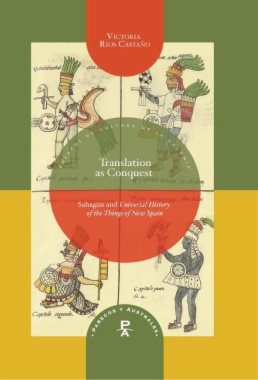The title Translation as Conquest serves as a twofold metaphor that associates translation, conquest, and conversion and claims the role of Sahagún as the controlling mind of the translation process and as the editor of the cultural translation product.
- Cover
- Title page
- Copyright page
- Table of Contents
- Acknowledgements
- Introduction
- Chapter 1 Sahagún’s Education and Franciscan Training in Spain
- Sahagún’s Intellectual Origins: From Early Education to the University of Salamanca
- Sahagún’s Religious Education: The Friary of San Francisco
- Chapter 2: Sahagún and the Spiritual Conquest of New Spain
- The Imperial College of Santa Cruz in Santiago de Tlatelolco
- Sahagún’s Composition of Linguistic and Doctrinal Works in Nahuatl
- Books on Antiquities and Geographical Accounts
- Chapter 3: Sahagún’s Intellectual Models for the Composition of Historia universal
- Sahagún and the Encyclopaedic Tradition
- The Influence of Christian Works on Historia universal
- Chapter 4: Inquisitorial Techniques as Sahagún’s Method of Data Collection
- The Inquisition in Spain and New Spain during the First Half of the Sixteenth Century
- Olmos and Sahagún’s Application of the Inquisitorial Techniques to the Collection of Indigenous Data
- The Origin of Sahagún’s Questions
- Chapter 5: The Composition of Historia universal: Sahagún, the Respondents, and the Assistants
- The Nahua Respondents’ Role
- The Nahua Assistants’ Role
- Sahagún’s Role
- Conclusion
- Appendix I: Contents of Historia universal
- Appendix II: Comparison of Contents
- Appendix III: Sahagún’s Rearrangement of Contents
- Bibliography
- Index

